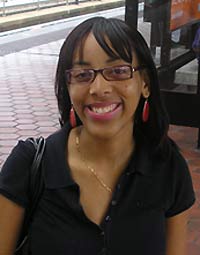New Climate for Action: Be an H2O Hero
Monday, November 3rd, 2008About the author: Ashley Sims, a senior at Indiana University, is a fall intern with EPA’s Office of Children’s Health Protection and Environmental Education through the Washington Leadership Program.
Last month EPA launched the climate change and children’s health education campaign. In an effort to promote action among middle and high school students, this campaign focuses on daily action steps we can take to address global climate change.
Let’s get started on our weekly discussion. Today, many teenagers brush their teeth or shave while leaving the water on rather than turning it off. This increases energy use and greenhouse gas emissions into our environment. Public water systems require a lot of energy to purify and distribute water to people’s homes. Saving water, particularly hot water, can cut energy use and greenhouse gas emissions.
Choosing to turn off the water when you’re brushing your teeth or taking a shower instead of a bath, can cut energy use and reduce greenhouse gases. Turning off the water while you brush your teeth can save up to 8 gallons of water each day. The same is true when you wash dishes. If you take a shower instead of a bath, you can save about 50 gallons of water! As you can see, saving water at home is an easy thing to do.
Another thing you can do to conserve water is encourage your parents to inspect your house for leaky faucets or toilets. You could be wasting up to 200 gallons of water each day. I bet this information will motivate your parents to repair any leaks right away! Also, washing your bike or car with a bucket instead of a hose is another way to conserve water.
Remember these tips:
- Turn off the water when you are brushing your teeth or shaving.
- Take a shower instead of a bath; doing so can save about 50 gallons of water!
- Inspect your house for leaky faucets or toilets
- Use a watering can instead of a hose in the garden.
Let’s do our part for climate change and reduce the energy we use where we live, learn and play! It is good for our health and the health of the planet. And don’t forget to let me know what you do to conserve water.
To learn more information on water usage, visit http://www.epa.gov/watersense/kids/index.htm and http://www.epa.gov/watersense/kids/hose.htm

 My name is Ashley, and this semester I have the privilege to work at the EPA Office of Children’s Health Protection and Environmental Education. I am so excited to spend the next couple of months writing blog entries in order to give middle and high school students a voice to express their own thoughts and feelings on issues like global climate change. Let me start off by mentioning a few things about myself.
My name is Ashley, and this semester I have the privilege to work at the EPA Office of Children’s Health Protection and Environmental Education. I am so excited to spend the next couple of months writing blog entries in order to give middle and high school students a voice to express their own thoughts and feelings on issues like global climate change. Let me start off by mentioning a few things about myself.